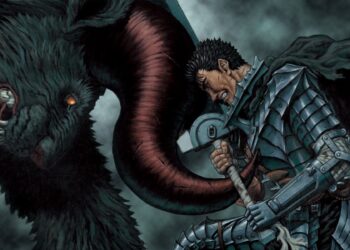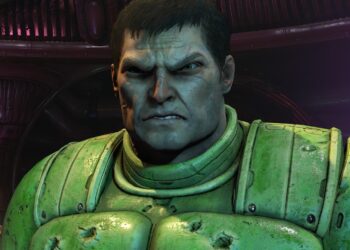Is Red Dead Redemption 2 Based on a True Story? Unpacking Fact from Fiction in Rockstar’s Wild West
Have you ever ridden across the dusty plains in Red Dead Redemption 2 (RDR2) and thought, “Could this be real?” Many players ponder this. Rockstar Games creates a world so immersive and gritty. It blurs the line between fiction and historical fact. Let’s explore this question: Is Red Dead Redemption 2 based on a true story? It’s a complex answer, partner.
I. Inspiration and Historical Context: Setting the Stage
First, let’s define the setting. Red Dead Redemption 2 isn’t a documentary. It serves as historical fan fiction. The game happens in a fictionalized version of the United States. Forget those state lines from school; the map is a blend of inspirations from different American states.
In terms of time, we find ourselves in 1899. The Wild West, as shown in dime novels and films, is fading away. Progress moves forward like a steam train, threatening the outlaw lifestyle. This late 19th-century backdrop matters. It’s a time of change. The freedom of the frontier meets the forces of civilization. It’s the Wild West’s awkward teenage phase.
The key question is: how historically accurate is RDR2? It resembles your grandpa’s stories: mostly true, but with embellishments for drama. RDR2 seeks historical authenticity, but it values atmosphere over nitpicky details. The aim is the feeling of that era, not a detailed recreation.
Rockstar combines fact and fiction like a skilled bartender mixes drinks. You get reality’s kick with creative license as the chaser. The game’s world feels real and immersive thanks to developers’ research into the late 1800s’ social, cultural, and technological aspects.
What about social issues? RDR2 highlights these clearly. Racism, sexism, and stark class divisions are not just background details. They show the harsh realities of that time. The technology shown, from horse-drawn carriages to firearms, reflects extensive research. Daily life details—clothing, campfire food, and social customs—are accurate. It’s like stepping into a time machine with a hint of gunpowder.
However, RDR2 is not a PBS documentary. It doesn’t aim to recreate historical events or portray real figures with precision. Rockstar exercises creative liberties with character motivations and plot points. Sometimes, accuracy takes a backseat to storytelling. RDR2 is a thrilling tale.
To ignite their creativity, Rockstar drew inspirations from classic Western films. Think movies like
II. Characters and Real-Life Counterparts: Echoes of the Past
Next, let’s discuss characters. RDR2 features memorable individuals. While they aren’t direct copies of historical figures, many are inspired by real people. Some easter eggs are subtle; others are more obvious. They deepen the game’s narrative, rewarding players familiar with Wild West history.
Take Arthur Morgan, our flawed hero. He’s not taken straight from history books but is a blend of various influences. Interestingly, Arthur didn’t exist before RDR2. He was created to add depth to the Van der Linde gang’s backstory.
Arthur’s design borrows from cinematic icons. Think of actor Toshiro Mifune, noted for his powerful presence. Arthur embodies that quiet intensity. Consider John Wayne, the archetypal Western hero. Arthur’s strength and serious demeanor reflect Wayne’s classic roles. The plot dynamics between Dutch and Arthur echo real-life stories from Butch Cassidy and the Wild Bunch Gang.
Eagle-eyed players spot similarities between Arthur and modern Western characters. Consider Russell Crowe’s Ben Wade from “3:10 to Yuma” or Kevin Costner’s Charlie Waite from “Open Range”. Arthur captures the evolving anti-hero role.
Beyond Arthur, let’s think about Albert Mason, the wildlife photographer in the game. His character pays tribute to George Shiras III, a pioneering wildlife photographer. Shiras was known for capturing nocturnal animals, much like Mason in-game. A neat nod for history buffs.
Then, there’s Dutch van der Linde. He leads the gang but gradually loses his grip on reality. As mentioned, the Van der Linde gang is inspired by the Wild Bunch. Dutch’s grand statements and shifting morality mirror the complexities of real outlaw leaders, combining charm and menace like romanticized figures from the Wild West.
III. Locations and Real-Life Inspirations: Mapping the Game World
The vast map of Red Dead Redemption 2 stands out as its own character. Just like the personalities, the locations have real-world inspirations. Let’s visit some key areas and their historical counterparts.
Saint Denis, the lively city in Lemoyne, clearly models after New Orleans, Louisiana. The resemblance is striking. Both share a French heritage visible in architecture. Saint Denis boasts French-inspired buildings, narrow streets, and ornate balconies, evoking “French Quarter” vibes.
Blackwater, a key place in the saga, also has notable parallels. There is a real Blackwater in Missouri along the Blackwater River. While Missouri’s Blackwater is a small town, the game’s version feels more like St. Louis, Missouri. Both locations act as gateways to the West with bustling commerce.
Van Horn Trading Post, a rough settlement by the Lannahechee River, resembles the infamous Under-the-Hill district of Natchez, Mississippi. Historically, Under-the-Hill was known for saloons and lawlessness. Given Van Horn’s reputation and proximity to Saint Denis, the connection exists.
Moving north,
Annesburg resembles Pittsburgh, Pennsylvania. The mining town has a gritty look. Industrial buildings dominate the landscape. Its grim appearance captures the harsh realities of labor in early industry. This aligns with the image of Pennsylvania mining communities.
Lemoyne represents a swampy region based on Louisiana. Inside Lemoyne, Bayou Nwa mirrors the swamps near New Orleans. Alligators, murky water, and Spanish moss-draped trees create an authentic atmosphere. Rockstar captures the sights and sounds of the Deep South in rich detail.
IV. Story Elements and Historical Parallels: Disease and Decline
RDR2’s story resonates with historical truths. Arthur Morgan’s tuberculosis stems from a fight with Thomas Downes. This moment is key for Arthur. Tuberculosis was common and deadly in the late 19th century. Poverty often spread it, making Arthur’s fate believable. It grounds his story in real medical challenges.
The game’s main plot mirrors historical trends. It showcases the Wild West’s decline, with outlaws clashing against civilization. Characters struggle to survive in a changing world. In 1899, the open frontier was vanishing. Law and order tightened, fading the legendary era of gunslingers. RDR2 reflects this loss.
V. Character Fates and Story Progression: Tragedy in the West
The fates of major characters echo tragedy, highlighting outlaw life realities. Arthur Morgan’s death impacts many players. At 36, he confronts mortality from tuberculosis and choices made. His death scene shifts by player honor. Low honor leads to a brutal execution by Micah. High honor allows a peaceful farewell at sunrise. Both see stark finality in his path. The age gap with John Marston is critical: Arthur is 36 in 1899, while John is 26 (at 38 in 1911 during RDR1). This timeline explains why Arthur lacks mention in the first game.
John Marston’s death in the original game is equally powerful. He dies by a government firing squad led by Edgar Ross. John sacrifices his life for his family’s safety. This selfless act adds depth to his character. By 1914, post-Abigail’s death, Jack Marston is grown, aged 19. He sports a mustache and goatee, showcasing time’s passage and effects of past events on both games.
Dutch van der Linde’s ending is ironic. In Red Dead Redemption (1911), John finds Dutch, who leaps off a cliff, ending his life. Dutch, once a magnetic leader, clings to his outdated beliefs, opting to end his story rather than face inevitable defeat. These outcomes resonate with Wild West era realities and transitions.
VI. Red Dead Redemption 3 Speculation: The Future of the Franchise
The future of Red Dead Redemption 3 (RDR3) remains uncertain for fans. Rockstar Games has not confirmed it yet. They maintain secrecy about future projects until ready to reveal them. Anyone predicting release dates lacks valid information. Currently, there’s no set RDR3 release date.
Nonetheless, industry speculation is rampant due to Rockstar’s patterns. They alternate major franchises: Grand Theft Auto and Red Dead Redemption. With Grand Theft Auto 6 (GTA 6) arriving in 2025, many assume RDR3 will soon follow. Speculations suggest a window from 2026 to 2030. This aligns with Rockstar’s development cycles.
RDR3’s story direction offers many possibilities moving forward. Some speculate that Rockstar may shift from the Van der Linde gang saga. A new gang or different Wild West period could take focus. The Wild West era spans decades, providing unexplored storytelling avenues. Perhaps they’ll explore a prequel about Van der Linde gang’s early days or set their narrative elsewhere.The potential for storytelling is vast.
Rockstar’s development cycle impacts these predictions greatly. Their approach emphasizes quality over speed. Given the scale of their titles, extended development time is bolstered by a commitment to detail. Additionally, Take-Two Interactive, Rockstar’s parent, hints at new installments expected in fiscal years 2026 or 2027. This corporate insight fuels speculation that RDR3 is being developed, albeit discreetly.
VII. RDR2 Development: A Mammoth Undertaking
To grasp the blend of reality and fiction in RDR2, consider its immense scale. Red Dead Redemption 2 was a colossal venture. Development spanned over eight years, starting soon after the first game’s release. Eight years is considerable! This length underlines the detailed craftsmanship Rockstar insists upon in their games.
It was not solely duration; funding was substantial too. RDR2 is said to be one of the priciest games ever made. Official budgets are never disclosed; yet estimates suggest hundreds of millions spent. Such investment underlines the ambition driving Rockstar’s vision for immersive gaming experiences. All that time, effort, and money culminated in a title that beautifully intertwines historical inspiration with fictional storytelling.
Discover further details on the Red Dead Redemption 2 Wikipedia page. To examine real-life inspirations behind characters, consult works like The Red Dead Redemption 2 Characters Based on Real People. For more on Arthur’s journey, follow his Arthur Morgan Wikipedia page.










